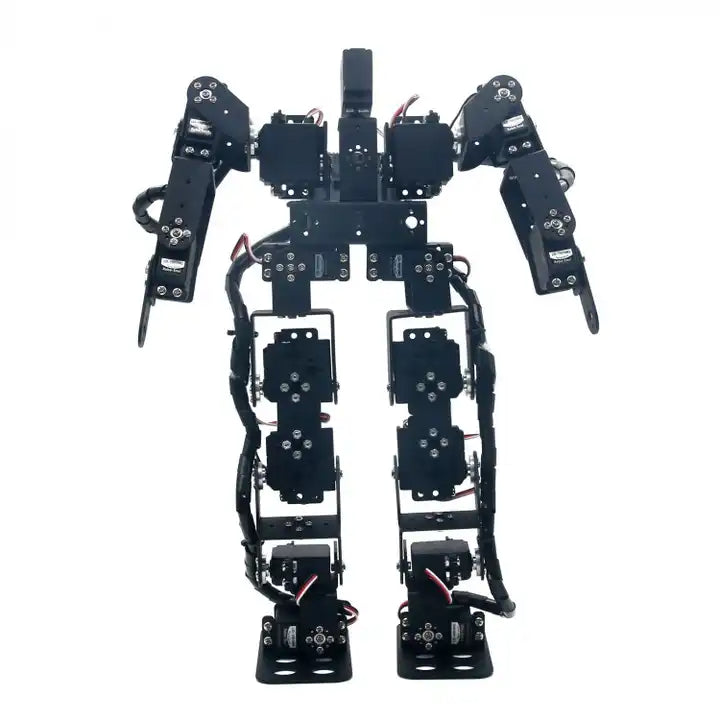1
/
of
1
MAJESTRONICZ
17-DOF Biped Robot Without Servo
17-DOF Biped Robot Without Servo
Regular price
Rs. 5,250.00
Regular price
Rs. 7,500.00
Sale price
Rs. 5,250.00
Unit price
/
per
Taxes included.
Shipping calculated at checkout.
Couldn't load pickup availability
A 17-DOF (Degrees of Freedom) Biped Robot without servos refers to a humanoid robot with 17 articulated joints (typically involving legs, arms, and possibly the torso or head) but designed without the use of traditional servo motors to actuate these joints. Instead, such a robot could use alternative mechanisms to achieve motion, such as pneumatic actuators, linear actuators, stepper motors, or even external control systems like hydraulic actuators.
Possible Applications:
- Research and Development: A 17-DOF biped robot without servos could be used in advanced robotics research to explore new methods of actuation and control.
- Prosthetics: Pneumatic or hydraulic actuators could be used to design prosthetic limbs or exoskeletons with more lifelike movements.
- Humanoid Robotics: Such robots can be used for various humanoid applications like advanced service robots, entertainment, or human-robot interaction studies.
- Robot Competitions: Participating in competitions such as RoboCup where robots are required to walk and perform complex maneuvers.
Example Components for Building a 17-DOF Biped Robot Without Servos:
- Actuators: Pneumatic actuators, linear actuators, stepper motors, or hydraulic cylinders.
- Frame: Lightweight, durable materials like aluminum or carbon fiber.
- Microcontroller: Arduino, Raspberry Pi, or a custom controller.
- Sensors: Gyroscopes, accelerometers, and force sensors for balance and feedback.
-
Power Supply: Batteries (e.g., lithium-ion) or external power source.
Advantages of a 17-DOF Biped Robot Without Servos:
- Customization: The robot can be customized to use more cost-effective or lightweight actuators instead of heavy servos.
- Innovation: Using non-traditional actuators (such as pneumatics or hydraulics) can lead to more innovative solutions and potentially provide smoother motion or greater strength.
- Potential for Higher Payloads: Using actuators like stepper motors, pneumatics, or hydraulics can enable the robot to carry heavier payloads compared to servo-driven robots.
Challenges:
- Complex Control System: Without servos, the control algorithms can become much more complicated. The robot would require real-time feedback from sensors to adjust its movements and prevent falls.
- Power Consumption: Non-servo actuators like hydraulics or pneumatics can consume significant power, which may limit the robot's operational time.
- Size and Weight: Depending on the actuator type used, the robot might become bulkier or heavier compared to traditional servo-driven bipeds.
Share

